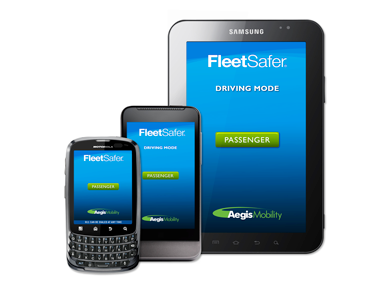This guest post was authored by Matthew Curtis, Software Alliance Manager at TomTom Business Solutions and was originally published here.
The advantages of mobile devices and smartphones to companies and mobile workers are significant. Technicians can instantly receive Work Orders, search for inventory, communicate via voice, email and text and even navigate with turn-by-turn directions.
Mobile apps such as vWorkApp offer elegant solutions to leverage mobile technologies such as credit card processing, signature capture, barcode scanning and customer forms to enhance the productivity of mobile workers. Even more impressive is how vWorkApp is integrated with TomTom’s telematics and connected navigation solution to help guard against the significant risks associated with employee use of smartphones while driving on the job.
What smartphones cannot do is replace the value of a hard wired black box. By permanently installing a black box into the power and ignition wires of a vehicle, businesses are assured of knowing where their vehicles are and what they’re doing. TomTom’s LINK 510 (black box) contains a GPS, accelerometer, cellular and Bluetooth connectivity. Every minute the vehicle is running, the device is sending location and driver behavior data to the cloud.
So what can a telematics black box do that a smartphone can’t? Its tamper proof! Workers can’t turn it off, throw it out the window, run it out of batteries, leave it on the kitchen counter or talk and text on it. A modern black box also monitors when a vehicle is idling (wasting fuel) and when a secondary motor (PTO) is in use (great for monitoring unauthorized use). Notification that your vehicle is moving when the engine is not running can help you track down your vehicle in the event it is unexpectedly towed or stolen.
More importantly, a smartphone can’t monitor driver behavior, which is a significant driver of operational costs. Imagine sitting in the passenger seat of all your drivers. Every time they sped significantly over the posted limit, took a sharp turn, slammed on their brakes or sat in the driveway with the engine idling for 15 minutes; you were there? Do you think they would driver smarter? It’s your fuel, insurance, maintenance costs and reputation on the line, not your drivers.
The LINK 510 provides these types of driver behavior to the business owner, and with TomTom’s line of connected navigation devices, Active Driver Feedback is presented in real-time to the driver using the PRO series navigation devices. Notification via visual and audible alerts are presented to the driver and back office in real-time, as well as through reports on both the device and TomTom’s WEBFLEET interface.
Still want to stay connected with your workers while they’re driving? No problem, our PRO series navigation devices enable you to dispatch Work Orders directly to your driver, enabling them to accept and navigate to the job site without breaking any laws or stopping their vehicle. They can also pair their smartphones with their navigation device for safe and legal communication.
Conclusion: Smartphones are amazing tools, but should not be used for Over The Road driver and vehicle management. There is clearly a place for smartphones in the daily operation of your mobile workforce, but that use case is not driving.



